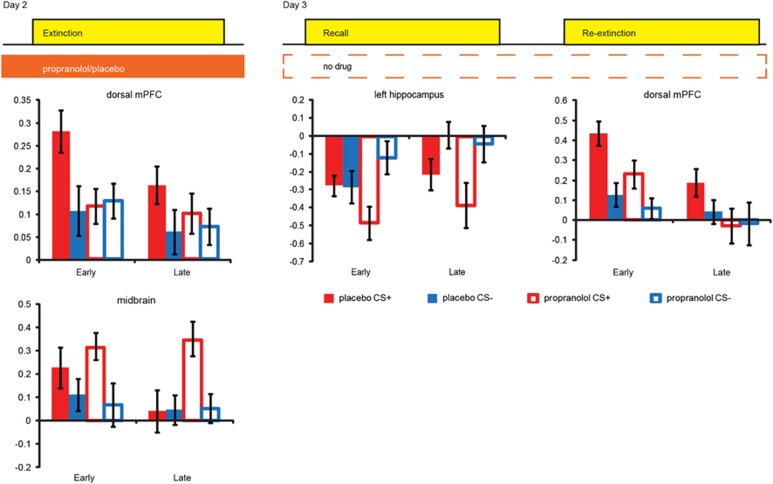Figure 3.
Beta-blockade effects on blood oxygenation level-dependent functional magnetic resonance imaging (BOLD-fMRI). Propranolol administration affected the neural network of extinction learning. Analyses on the extracted data from regions revealed by the main effects of task showed that during extinction learning propranolol eliminated differential conditioned responses in the dorsal medial prefrontal cortex (dmPFC) while increasing differential responses in the midbrain (paired t-tests CS+ vs CS− within the placebo group for dmPFC: t(23)=2.395, p=0.025, and midbrain: t(23)=1.509, p=0.145; and the propranolol group dmPFC: t(21)=−0.222, p=0.826, and midbrain: t(21)=2.163, p=0.042). During the recall task, the propranolol group showed differential conditioned responses in the hippocampus, an effect not observed in the placebo group (paired T-tests placebo group CS+ vs CS− early phase: t(23)=0.097, p=0.924, and late phase: t(23)=−2.039, p=0.053; propranolol group early phase: t(21)=−3.085, p=0.006, late phase: t(21)=−2.615, p=0.016). During the re-extinction task, the propranolol group showed reduced responses in the dmPFC (independent sample T-test averaging over all conditions: t(43)=2.091, p=0.042). Placebo group (solid bars), propranolol group (open bars), CS+ (red), CS− (blue), early=average over the first half of the trials, late=average over second half of the trials, and error bars reflect SEM. CS, conditioned stimulus.

